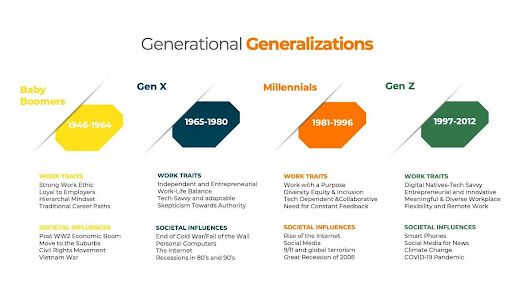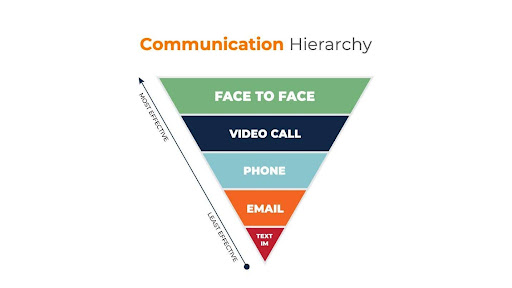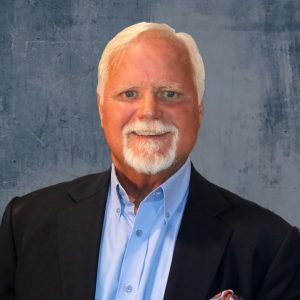By Scott De Long, author of “I Thought I Was A Leader”
When you look at the statistics produced by the US Labor Bureau the trends become clear. More than 67% of today’s workforce belong to the millennials and Gen Z. This is a trend that is only going to escalate. In fact, there are over 10,000 people a day turning 65 and therefore working on exiting the workforce and a similar number of young people entering the workforce as well.
What this tells us is that even if the Boomers and Gen X crowd oversee our businesses today, we must not just account for, but look for the advantages that come from employing these younger generations. It has become clear that these younger workers think differently about their job and even their career, and that is not a bad thing.
Generational differences are more of an evolution rather than a revolution, which means that there is some transition between the wants and needs from one generation to another. We tend to understand some of those wants and needs from the generation the proceeds our own, as well as the one that comes directly after our generation. The real gap is when we skip a generation, for instance Boomers may understand how the Gen X crowd thinks but struggle to understand the millennials and especially the Gen Z folks.

Let’s not fool ourselves here with these biases we may have towards younger generations working both ways. Millennials and Gen Z employees don’t understand their Boomer employers any more than we understand them. For the health of our organizations, and frankly for the future of the organization, we need to bridge these gaps.
The first step is to recognize these inherent differences, as well as where they came from. Taking the time to try to understand these differences can make a huge difference as we work to bridge the gaps. More than that though, is while we are understanding the differences, it is important to look to see the benefits that come with these differences. By now most of us understand that diversity is a strength and not a weakness, but diversity is not just limited to race, gender or religion. It can and should include generational diversity. Each of these groups brings their own strengths to the organization, and we will be better off as a company when we recognize and embrace the fact that we can all learn something from those of us who might not fit into our mold.
Step two applies an even greater sense of humanity. People are individuals. While these generalities we make have some basis in fact, not everybody that was born within a certain generation will resonate with these traits. Furthermore, lumping people into a broad-ranging group rarely is well received. None of us want to be saddled with biases from being lumped into aggregation of others simply because we were born in the same 20-year span. It is rather insulting. We need to treat people as individuals and find out more about them, who they are, what makes them tick, and what strengths they bring to the organization.
There are three key components that can help to bridge the gaps between generations, and in fact the gaps that may be present with anybody in the organization. If we want to build stronger more resilient companies where innovation thrives it is important to build stronger teams. If we want stronger teams, we must create an atmosphere where we can build trust. To build trust, we need to learn to communicate on a deeper level. In the scope of this article, we will only have space for the first leg, communication.
The ways we learned to communicate may be the most glaring difference in the generational divide. Boomers were taught to look a person in the eyes and present a firm handshake. Millennials and Gen Z learned to communicate electronically. They were not even in the same room, so the firm handshake does not even make sense to them. These younger people learned to communicate using their thumbs while looking at a screen, so eye contact is not even a consideration. In our fast-paced world, there is certainly room for both. There are significant advantages to SMS, and programs like Slack and Basecamp, and at the same time there really is no substitute for in person face to face communication when there is any chance for conflict, or even a difference of opinion. It is important to understand the strengths and weaknesses of all these systems then use them appropriately to get the best results.
Kerry Patterson, Joseph Grenny, Ron McMillian and Al Switzer write about some processes of communication, in their groundbreaking book Crucial Conversations. A crucial conversation is one where the stakes are high, motions are strong and there are opposing opinions. With this in mind we developed the communication hierarchy. (see illustration). The communication hierarchy states that the higher the probability of conflict, the higher up the hierarchy we need to go.

When you look at the image, you may notice that email and SMS are far down the scale, yet they have become the primary source of communication in business today. While they may be efficient, they certainly are not effective when the potential for a crucial conversation exists. The takeaway here, and how it relates to the generational divide is that we need to learn not just the best communication form for the circumstance, we need to learn to use the tools effectively.
Certainly, the younger members of our teams can help the older generations learn the use and value of technology, but on the flip side, the older generations need to take the time to teach and mentor their younger peers on the value of old fashion communication. While this is just one example of how the generations can benefit each other, its s an important consideration if we want to get to the other components or build trust and develop diverse teams that will take us further within the organization. With this one example we can see where training and mentorship can go both ways.

About the author

Scott De Long, Ph.D. is a renowned author, speaker, educator, and serial entrepreneur with three successful company exits. With a doctorate in leadership studies, Scott De Long teaches practical applications of academic theory in communications and entrepreneurship at the university level. His latest book, “I Thought I Was A Leader…A Journey to Building Trust, Leading Teams & Inspiring Change,” reflects his approach to leadership. As CEO of Lead2Goals, he provides coaching, counseling, and training for growth-oriented organizations. Additionally, he co-hosts The CEO Podcast, discussing pivotal topics for business leaders.
For more insightful content, visit http://scottdelong.net or catch Scott’s show Lead2Goals and TheCEOpodcast on YouTube. You can also stay updated with Scott on Instagram @scottdelongphd.
Related Articles

Hexnode CEO on how the “Holiday Illusion” is Masking the Risks of Retail’s Seasonal Workforce
The danger of seasonal hires is magnified not just by who is accessing the network, but when they are doing it. Sophisticated threat actors possess a deep understanding of the retail operational calendar.

The New Frugality: How Inflation and Tariffs Are Reshaping Consumer Spending
One of the most telling shifts is how shoppers approach decision-making. Where convenience once dominated, consciousness now plays a larger role. People are researching more before making a purchase, comparing prices across multiple platforms, and questioning whether they really need the product in the first place.

Embracing new concepts vs the return to brick-and-mortar
Balancing the return to physical retail and the development of new technologies to enhance customer experience and drive operational efficiency for long-term success.
Enartis to Acquire Parsec in Winemaking and Retail Deal
The deal will bring Enartis and Parsec together to help wineries manage every part of production more easily and efficiently, from grape to bottle.


 for the latest news and job opportunities in retail tech
for the latest news and job opportunities in retail tech 